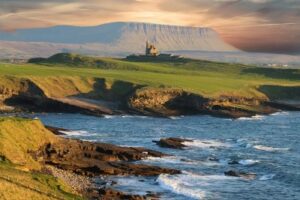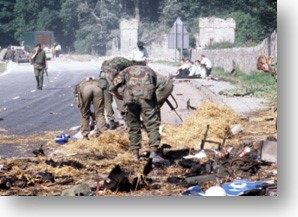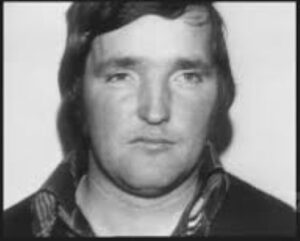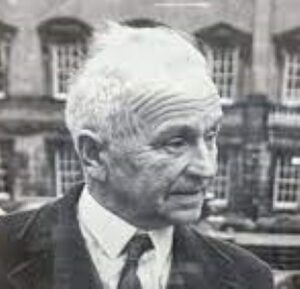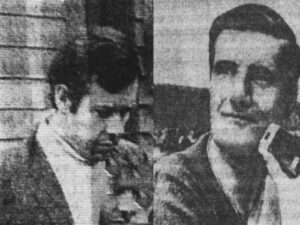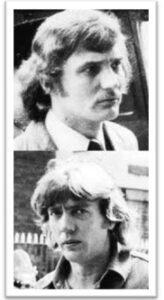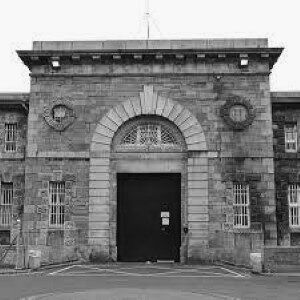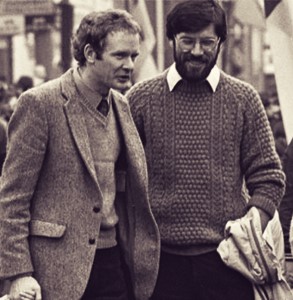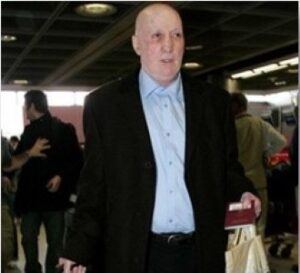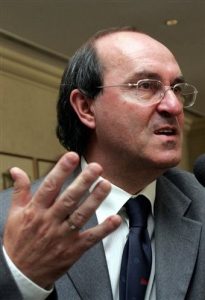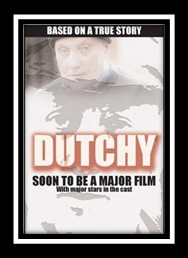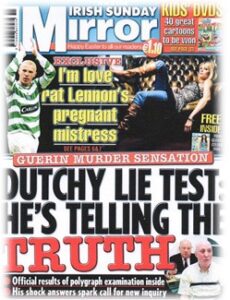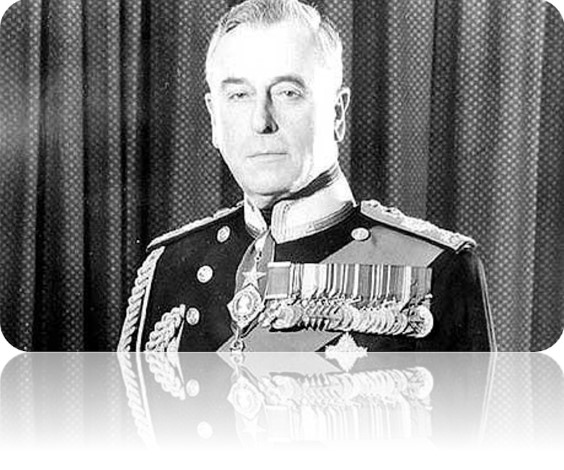
History says on that the 27th August 1979 the provisional IRA ‘carried out’ two attacks, both North and South of the border, which would be etched into the history books as the day that left 18 British Army personnel dead and the Queen’s cousin assassinated. Lord Mountbatten was the grandson of Queen Victoria, one time commander of the Allied Forces in First Sea Lord, retired Admiral of the Fleet, and the last Viceroy of India and Earl of Burma.
Despite warnings from the Garda and British Intelligence Agencies that his life was potentially in danger, Mountbatten was defiant in wanting to continue enjoying his annual holiday in Mullaghmore which was a well-known holiday destination for IRA volunteers, many of whom ‘may have’ noted Lord Mountbatten’s daily patterns whilst holidaying in the village.
On that fateful day Lord Mountbatten, who frequented the picturesque village of Mullaghmore in County Sligo, was out fishing with his family and a local boat boy when a bomb placed under the boat exploded. Provisional IRA man Thomas McMahon had, it is said, placed the bomb on the boat undetected the previous night and it was to have devastating consequences.
Mountbatten was killed instantly in the explosion, which also killed his grandson Nicholas Knatchbull, local bat boy Paul Maxwell, and Baroness Brabourne died the next day from her injuries. The daring assassination of a member of the Royal Family was a triumph for the Provisional IRA, generating huge international media coverage. The Provisional IRA, admitting responsibility for the attack, released a statement:
“This operation is one of the discriminate ways we can bring to the attention of the English people the continuing occupation of our country.”
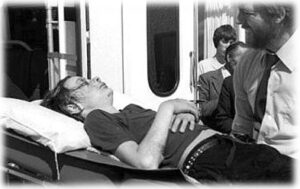
However, in a cruel twist of fate, it was later revealed by the media that Mountbatten had spoken privately about his wish for the eventual reunification of Ireland.
Just hours later, the Provisional IRA carried out an ambush on the British Army in Warrenpoint, in revenge for Bloody Sunday, in what was to become known as ‘the Narrow Water Massacre’. The Provisional IRA had always tried to second guess the movements and patterns of the British Army and RUC, watching how they reacted to certain events.
The first bomb was planted under some hay in a lorry situated on the Warrenpoint dual carriageway. When it exploded, it killed six soldiers from the Second Battalion of the Parachute Regiment instantly.
The surviving army personnel, as the Provisional IRA had anticipated, immediately sought to cordon off the area and called for reinforcements. Reinforcements came several minutes later via helicopter from their nearby Bessbrook base. Again, the Provisional IRA had anticipated where the helicopter might land and placed their second bomb strategically.
As the helicopter carrying the injured army personnel took off, an IRA man watching from nearby Carlingford detonated the second bomb. Ten members of the parachute regiment and two members of the Highlanders died instantly.
The assassination of Lord Mountbatten and 18 British soldiers killed that day went down in Republican folklore as the single most successful day for the Provisional IRA and put the British Government under even more intense pressure to find a peaceful solution.
This, however, was not forthcoming, and the loss of special category status inside the Maze prison for the ‘Provo’s’ infuriated the Republicans, leading to many going on a hunger strike which would change the political landscape in Northern Ireland forever.
But did the Provisional IRA actually carry out both attacks?
Only one man was ever convicted of the cold and systematically planned murders of the Mountbatten party: Thomas McMahon. How did police link the murderer, Thomas McMahon, to the crime scene? The evidence against McMahon included a tiny speck of green paint on his boot which matched the paint on the yacht, the sand on his boots matched that found near the beach near where the boat was launched and traces of nitro-glycerine were found on his clothes which were matched to the bomb. McMahon was quickly sentenced to life imprisonment and a co-defendant Francis McGirl was acquitted. Not much was written more about the whole matter.
John Joe McGirl according to MI6 documents that have now come to light provided safe houses for the preparation of the attack in Mullaghmore in August 1979, an event that was indeed ‘designed to coincide’ with the killing of 18 soldiers at Warrenpoint, Co Down.
McGirl, a publican and auctioneer from Ballinamore, Co Leitrim, was a founding member of the Provisional IRA and set up its network of safe houses in the Leitrim-Cavan-South Donegal area. He played an active role in the IRA’s “Border campaign” of 1958-1962 but played only an organisational role in the Provisional IRA’s campaign. He died of natural causes in 1988 although the death itself was under suspect circumstances and was deemed ‘not worthy of further probe’ according to sources.
Francis McGirl, was arrested for the Mountbatten attack but released for lack of evidence. He died in an accident 10 years ago. Again the so called accident was under suspect circumstances but also deemed ‘not worthy of further probe’.
McMahon, who was originally from the south Armagh area, was one of the most active IRA figures in the Border area during the Seventies but evaded arrest on several occasions. He was one of the prisoners released after the first IRA ceasefire in 1995.
The list of suspected IRA figures found in British Security Services documents of 1973 now come to light corresponds to some extent with a list that is ‘understood’ to have been drawn up by the Gardaí in preparation for mass arrests as the Irish Government at the time believed the IRA was about to try to overthrow the State. There had been attacks on Gardaí in Border areas and in December 1972 the Government introduced an amendment to the Offences against the State Act which allowed the Special Criminal Court to imprison people for IRA membership on the word of a senior Garda officer.
That same Act has been subsequently used and abused for non-politically motivated offences and suspects.
That list was drawn up by Garda operation officers along the Border in preparation for mass arrests and, in all, more than 200 names were included in the area from Co Louth to Donegal. There were 50 in all in the Monaghan area.
The total list was leaked to a British Intelligence agent by a Garda collator, Patrick Crinion, working in the C3 Crime and Intelligence Section at Garda Headquarters. Both Crinion and a British agent John Wyman were arrested after a Garda surveillance operation and later sentenced to six months’ imprisonment.
British military intelligence network had for long been a hidden but ever-present force working in the shadows of life within the 26 Counties. In December 1972, the extent of that network and its infiltration of An Garda Síochána were dramatically exposed by the arrests of John Wyman and Patrick Crinnion.
Wyman, who used various aliases, was a member of the British secret service agency MI6 and was an important agent in the British intelligence network in Ireland.
During the 1960s, especially with the outbreak of conflict in the Six Counties and the resurgence in support for the republican struggle, Wyman’s network expanded. He recruited several Gardaí, including members of the Special Branch, as agents – the most important being Detective Sergeant Patrick Crinnion.
Crinnion joined the Gardaí in 1955. He was transferred to Dublin Castle in 1961 and in 1969 was appointed private Secretary to the then Head of Garda Special Branch, Chief Superintendent John P. Fleming and moved to Garda Headquarters in the Phoenix Park to control the intelligence section, known as C3.
Crinnion was a particularly valuable spy and was ideally placed to supply the British with intelligence on 26-County political and security matters, on republicans in general and on the IRA. In return for money he supplied Wyman with information, photographs and photocopies of numerous files and memoranda, most of it relating to republicans and republican supporters.
Included in the tangled web, which was Wyman’s spy network, were the Littejohn brothers, Keith and Kenneth. These were two English criminals on the run in Ireland during 1969, with whom British intelligence made contact. They offered to work as British spies in return for amnesty. Their offer was accepted and they were put in contact with Wyman in Dublin.
The Littlejohns were told to infiltrate republican circles, kill republican leaders and carry out operations in the 26 Counties designed to discredit the IRA and force the Fianna Fáil government to act in a repressive manner towards the movement.
The Littlejohn brothers were arrested in London on December 20th. The following day Wyman and Crinnion were arrested in Dublin and charged with stealing state secrets. The 26 authorities acted, it appears, out of the knowledge that, having failed to discredit the IRA, the British agents were planning a campaign of political assassinations in the 26 Counties.
With the loss of two key agents, the British opted to sacrifice the Littlejohn brothers in exchange for Wyman and Crinnion.
In February they were tried in secret and sentenced to just three months. As they had already been held for that time, they were immediately released and flown to London. The brothers were sent to Dublin the following month to stand trial.
They were jailed for twenty years only to be rescued by a young MI6 covert agent supplying them with toothpaste whilst in the basement cells of Mountjoy Prison serving time for what was an MI6 planned phoney arrest and sentence in the Irish Republic. The MI6 agent on a visit from his ‘supposed girlfriend’ assaulted her which led to the agent being located in the basement cells for punishment. During this period the agent assisted the Littlejohn Brothers who subsequently escaped.
The figures that appear on the British map released in the government papers contain only a small number of the names which were in the original Garda intelligence files.
The names on the map include those of such leading IRA figures as Daithi O Conaill (David O’Connell, as he was known then), Sean Keenan, JB O’Hagan, Kevin Mallon, and John Joe O’Neill.
According to Gardaí some of the names on the list were of relatively minor importance and several have drifted away from the IRA.
One of the men named on the list is Anthony McKiernan who was originally from the Markets area of Belfast and at the time the list was drawn up was already on the run and living in the Border area of Co Louth. McKiernan was subsequently accused of being an informant and was shot dead by the IRA in 1988, his body dumped in west Belfast.
Other leading figures on the list are JB O’Hagan, described in the Dáil at the time of his death two years ago by Sinn Fein Deputy Caoimhghin, O Caolain as a “good friend of mine”. O’Hagan and Kevin Mallon, who is also mentioned on the list, were arrested in Co Cavan in 1972 but broke out of Mountjoy Prison in a dramatic helicopter escape in 1973.
O’Hagan and Mallon were both from Co Tyrone and on the run in the Republic at the time the list was drawn up. Photographs of Mallon, unmasked and carrying a rifle, appeared in a number of publications.
The NIO’s intelligence shows that Daithi O Conaill was in hiding in the Bundoran area at the time. O Conaill was not only the IRA’s main strategist at the time but also its most important arms dealer. He spent a considerable amount of time on the Continent buying arms including a 4.5-tonne shipment of small arms from Czechoslovakia in 1971 which was seized at Schiphol Airport.
O Conaill was also responsible for drawing up the Provisionals’ ‘Eire Nua’ policy of a regional government structure for a united Ireland based on the four provinces. He was subsequently side-lined by the Northern-based leadership of Gerry Adams and Martin McGuinness and eventually left in 1986, along with Ruairi O Bradaigh and others, to form Republican Sinn Fein. He died in 1999.
Although the Provisional IRA ‘claimed’ responsibility it was in fact that on that fateful day there were in fact two very separate and distinct operations. The Provisional IRA claiming responsibility by a statement spoke only in the singular confirming “This operation is one of the discriminate ways we can bring to the attention of the English people the continuing occupation of our country.”
Whilst considerable attention and Gardaí/RUC time was occupied dealing with the Mountbatten murders to date no one has ever been convicted of the murder of the soldiers. MI6 documents confirm that at the time Irish Taoiseach Jack Lynch ordered Gardaí not to cooperate with the RUC investigation into the Narrow Water massacre. Although this has been subsequently rejected the fact remains that owing to the failure at any level in co-operation between the Irish Gardaí and the RUC the murder of the military personnel remains a mystery whilst the murder of Lord Mountbatten was easily resolved.
Did the Provisional IRA carry out both attacks or did they, as their press release, confirm only have a single ‘operation’? If so then and if the Provisional IRA did not carry out the Mountbatten attack, who did?
The evidence was that at the time of the explosion McMahon was some 70 miles away and in police custody having been arrested on suspicion of a stolen car. The bomb had been detonated by remote control at 11.39am when the boat, Shadow V, was about 200 yards from the harbour.
Because there was insufficient evidence to place the co-defendant McGirl at the fishing village of Mullaghmore, he was acquitted and ‘died’ in 1995.
He was tried for the assassinations in the Republic of Ireland, and convicted by forensic evidence supplied by forensic scientist Dr James O’Donovan that showed flecks of paint from the boat and traces of nitro-glycerine on his clothes. That was the only evidence since of course he was in police custody more than two hours prior to the detonation.
So who did detonate the bomb that killed Mountbatten? It certainly was not Thomas McMahon and to this day McMahon has refused to even discuss the matter.
McMahon had served the first 13 years of his life sentence in the IRA wing of Portlaoise. He and ten others, armed with guns and explosives, failed in an attempt to escape in 1985. Three years later, he fired a shot from a Browning pistol smuggled into a holding cell of Dublin’s Four Courts. But, in 1992, he claimed to have turned his back on the IRA.
It was at Portlaoise Prison that he met and befriended Patrick Holland better known as ‘Dutchy’ who died in a British prison under seriously and equally suspicious circumstances. Holland was represented by the man known as the ‘Real’ Devils Advocate Giovanni Di Stefano and upon his release from Prison which Di Stefano secured at 1 minute past midnight travelled to Rome to stay with Di Stefano.
It was there that Holland had confided to Di Stefano that Mountbatten had not been a target of the IRA and that McMahon had told him whilst in prison that the reason he had been arrested two hours before the explosion was to ensure he would not be blamed for what he termed ‘special operation’. McMahon was certainly a known Provisional IRA man and he and his father knew explosions well but ‘Dutchy’ was adamant that McMahon had told him he did not do it.
Paddy Holland told Di Stefano that the deal McMahon had agreed was that he would take the blame for all the murders and his family would be taken care of. McMahon’s wife was indeed ‘looked after’ and even entered the political forum and throughout McMahon’s time in jail Holland confirmed that McMahon lacked for nothing.
McMahon in fact was released from jail in August 1998 as part of the Good Friday peace agreement. He lives in Ireland in a hillside bungalow in Lisanisk, close to the market town of Carrickmacross in Co Monaghan.
Holland was jailed for eight years in 2008 for planning a £10m plot to kidnap a businessman in the UK. He was planning to write a book and Di Stefano received some material for what would have been an explosive insight into crime in Ireland.
A chapter of the book was an in detail account of the Mountbatten murder and the startling revelations that Holland said McMahon had made confirming that Lord Mountbatten had not been the subject of a Provisional IRA assassination and that the only targets on that day were the soldiers and he was not responsible for either.
Patrick Eugene ‘Dutchy’ Holland, 70, was found dead at 6am 19th June 2009 in Parkhurst Prison where he was serving a sentence for conspiracy to kidnap a businessman.
The UK Prison Service said he appeared to have died from ‘natural causes’, but that all deaths in custody are subject to investigation.
Di Stefano challenged the coroner’s findings without success but all in all the death of Patrick Holland was surely extremely convenient for the British Authorities.
In his book which was scheduled also to be made into a film the most startling revelation of all was that Mountbatten had been murdered not by the Provisional IRA but by the British Security Services because of a deep rooted secret Mountbatten knew that if revealed would have been so damaging to the Royal Family that it may have damaged their reputation for ever. It was all part of the same operation the British had in the 1970s Holland confirmed.
That prison confession by McMahon to Holland may well have cost ‘Dutchy’ his life and the secret Holland kept for so long may one day still make it to the big screen.
“There is no point being alive forever, merely becoming a burden to the people,” said an almost-retired Lord Mountbatten while being filmed for a BBC documentary. A month or so later he was a burden to no-one. One interesting fact that Holland stated was that whilst most world leaders lined up with Britain the United States refused to condemn the IRA. Is that because the CIA was aware that the IRA was not involved?
Gerry Adams, the then Vice President of IRA’s political wing Sinn Fein clarified that the IRA gave clear reasons for the execution of Mountbatten. “What the IRA did to him is what Mountbatten had been doing all his life to other people; and with his war record I don’t think he could have objected to dying in what was clearly a war situation. He knew the danger involved in coming to this country. In my opinion, the IRA achieved its objective: people started paying attention to what was happening in Ireland,” said Adams in an interview to the Time magazine.
What is noted is that the murder of Mountbatten although certainly not carried out by the IRA, Gerry Adams for ever an opportunist certainly performed the task of ‘spin doctor’ long before the phrase was made famous by the exploits of Tony Blair.
As for Patrick Holland what is notable is that upon release he passed a lie detector test arranged by a leading newspaper. His revelations regarding Mountbatten were no lies but may certainly have cost him his life.
© 2012 – Gdstefano –All Rights Reserved
NB: Some images retrieved from Google, will remove at owner’s request.

